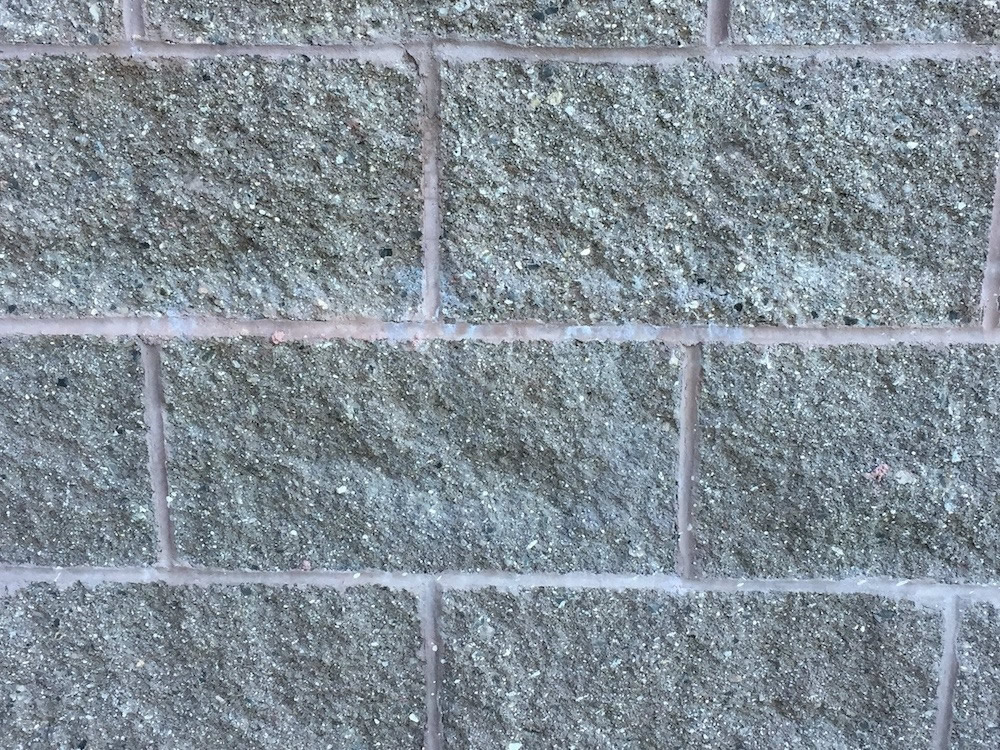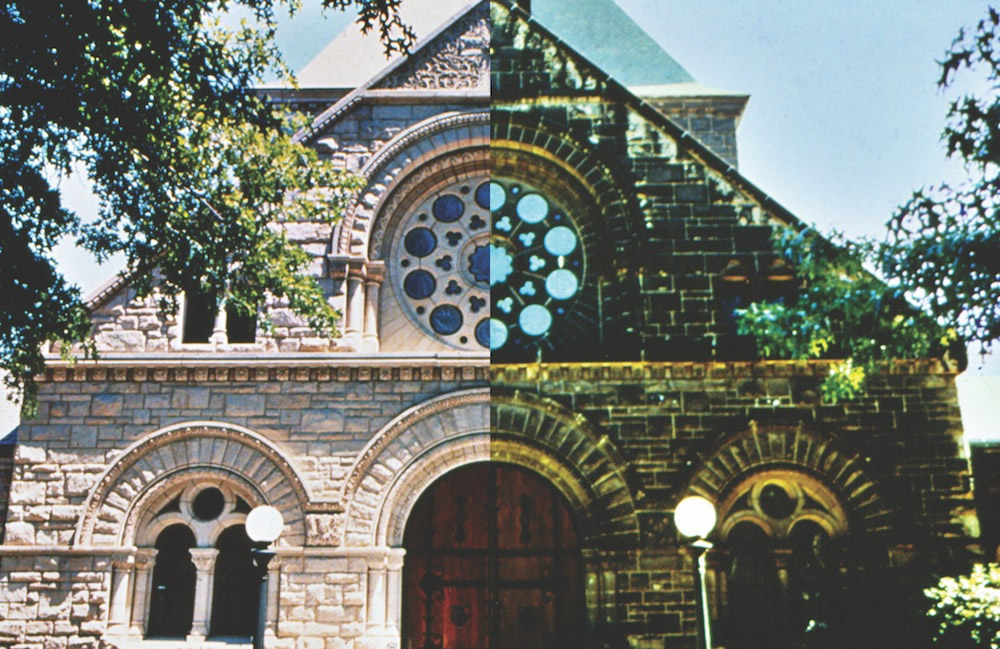Words: MASONRY Magazine
Photos: Hohmann & Barnard
For many mason contractors, cleaning questions repeatedly arise on the jobsite. From proper technique to environmental factors and material concerns, multiple factors must be considered when you prepare to clean a masonry structure.
To get answers to common masonry cleaning questions, MASONRY sat down with Marty Harris, Vice President of waterproofing, chemical and restoration products for Hohmann & Barnard/Diedrich. A former mason contractor, Harris worked for his family’s third-generation masonry company for 30 years. Today he puts that hands-on experience to work, overseeing product lines for H&B to include Diedrich masonry cleaning products.
Harris gives the following advice to masons for the cleaning and maintenance of masonry projects.
Masonry Magazine: How do I wash efflorescence and keep it from coming back?
Marty Harris: It’s important to understand what causes efflorescence in the first place. Understanding its causes allows us to find the proper steps to prevent or minimize efflorescence at the beginning stages of construction. Then, we can determine how to go about the cleaning process if or when it appears on new or existing masonry substrate – and keep it from coming back.
Efflorescence is salt deposits found in stone, brick, CMU, stucco and concrete when water is present in these materials. As the materials dry outwardly, salt is brought to the surface, causing efflorescence. The efflorescence appears as a powdery substance and requires special procedures to treat it.
Cleaning procedures for new masonry:
You can minimize the chance of having efflorescence by protecting products from moisture prior to installation, and by covering tops of unfinished walls. Efflorescence will most generally go away after an initial wash down, as long as water is not driven back into the material via water pressure that is too high during the washing process. Drying time is the best cure for efflorescence, but due to fast-paced construction schedules, time is of the essence.
When spot washing efflorescence, assure you don’t create a bigger problem by introducing more water to an issue already created by moisture. A few products in the market manufactured by reputable cleaning manufactures work well for cleaning efflorescence, after the initial wash is done. One product that I found is Spray-Away efflorescence cleaner, which can simply be sprayed on any leftover efflorescence. The job is done without scrubbing or rinsing.
Cleaning procedures for existing masonry:
Evaluate what is actually causing the efflorescence, so it doesn’t continue to return. Remember, efflorescence is caused

M.M: How do you know what type of brick cleaner should be used on new masonry?
M.H.: The first thing you should do is to ask the brick manufacturer to recommend a cleaning procedure for the brick being cleaned. When brick manufacturer cleaning recommendations are not provided, contact a reputable chemical manufacture representative for help.
Next, contact a reputable chemical manufacture rep. to help you with conducting a test. The rep. will be able to help you determine the proper dilutions ratio – how many parts water to parts product for your job. This will save you a lot of time and get you headed in the right direction. Your manufacturer rep. is a valuable resource.
M.M: Why did a brick cleaning solution work on a mockup wall, but not as well on the jobsite wall?
M.H.: On most jobsites, brick mockups are required several weeks or even months – depending on the size of the job – before the brick work actually starts. After the brick mockup has had the proper cure time, the brick mason is asked to clean the brick to evaluate the finished product for approval. This should really be conducted closer to the time of construction. If the brick is washed far in advance, the temperatures might vary considerably from the build time to the actual time the jobsite cleaning takes place. This will change how the brick cleaning solution performs on the mockup. If this takes place, it might take a few test areas to achieve acceptable results.
Cleaning in cold temperatures affects the reaction and drying time of the cleaning solution. Cleaning solutions are more effective when temperatures are 45 degrees Fahrenheit and rising. Never try to clean a wall when temperatures fall below freezing. Before cleaning, assure the ambient temperature will be 40 degrees Fahrenheit or above, and will remain so until the wall is dry.
M.M: Why does my block or brick wall have a white haze in the summer, but not in colder months?
M.H.: Most of the time, this takes place when temperatures are hot and or windy. It is caused when there’s an attempt to clean too large of an area, or the wall is not pre-wetted enough, thus resulting in the wall drying out. This allows the cleaning solution to draw into the material before the material is thoroughly rinsed from the brick or block wall. The dried-in cleaning solution then causes the white hazing or white scum on the face of the material. The reason this happens less in cooler temperatures is that the wall will stay wet longer and won’t let the cleaning solution draw into the material.

M.M: Can I use the same cleaning solutions on a new brick building as on an older, existing brick building?
M.H.: No. Cleaning detergents used on new masonry are designed to remove residual mortar, jobsite soiling, staining and efflorescence from the material. Older, existing masonry or masonry restoration usually has a specific reason for the needed cleaning, thus special cleaners are required for special need. I would suggest contacting a reputable chemical manufacturer for cleaning instructions for various cleaning or restoration needs.
